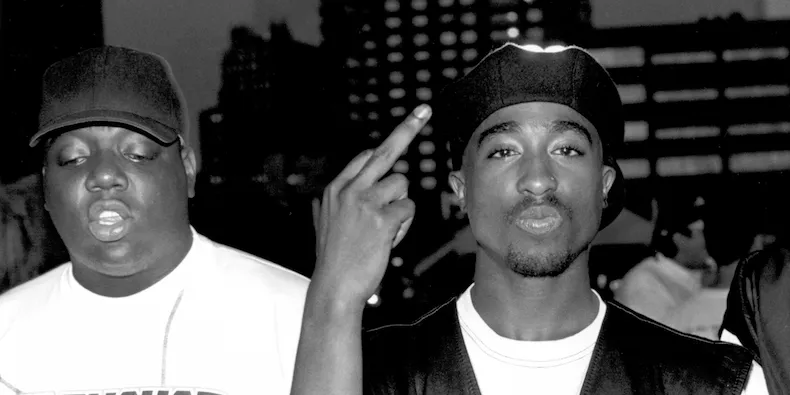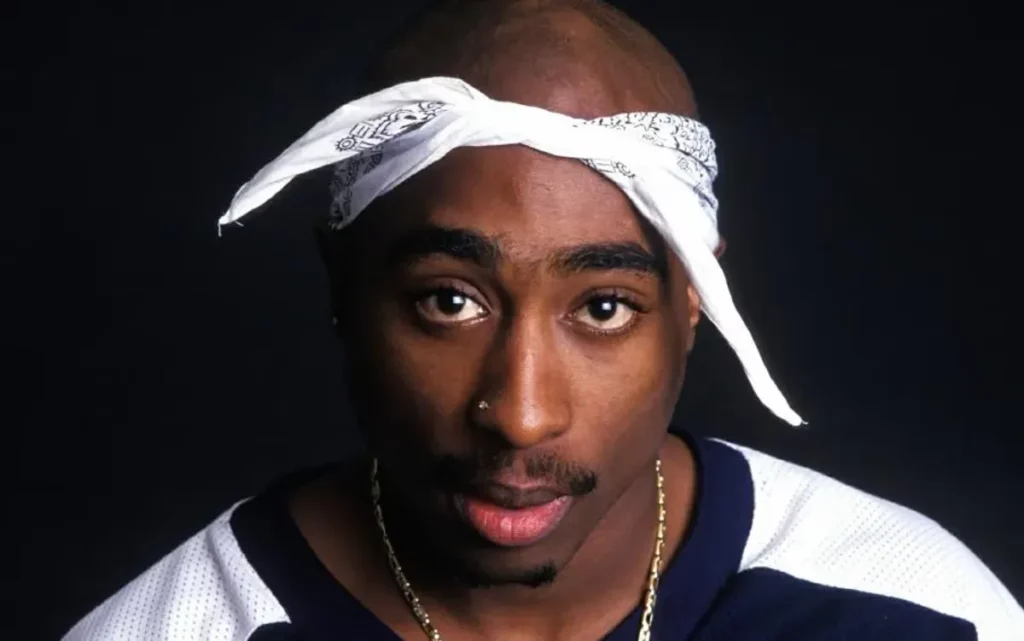Step into the world of the 90s gangsta-rap scene, where Tupac Shakur reigned supreme as both a talented rapper and versatile actor. Even after leaving this world, his musical legacy continues to inspire, with an astonishing 75 million records sold worldwide! Come and celebrate the life of an icon who embodied the spirit of noble struggle.
Who Was Tupac Shakur
The enigmatic Tupac Shakur, a gifted yet tormented artist, met a tragic end in a hail of bullets on the fateful night of September 7, 1996. His untimely death left an unsolved mystery and a gaping hole in the world of music.
Tupac’s groundbreaking career began as a passionate crusader, giving voice to the struggles and injustices faced by African Americans. His powerful message and artistry cemented him as a beacon of hope for generations, transcending time and uniting those seeking equality.
However, the turbulent battle within himself led him down a dangerous path of gangsta rap and into the dubious embrace of Death Row Records’ infamous Suge Knight. As the lines between Tupac’s art and life blurred, his fate steered towards a devastatingly tragic conclusion.
The Early Life of Tupac
Born Lesane Parish Crooks, Tupac’s name change was deeply rooted in activism and revolution, inspired by a Peruvian revolutionary and his sister’s father, who were both influential Panthers. His mother, Alice Faye Williams, experienced her own personal transformation, becoming Afeni Shakur after joining the Black Panther Party, even defending herself in court while pregnant with Tupac. Sharing her passion for oration, Tupac and Afeni’s legacy, both symbolically and literally, carry on the Shakur name, even after Afeni’s passing in 2016 at age 69.
Did you know that the legendary rapper Tupac Shakur grew up without the guidance of his father or a father figure? Billy Garland, his biological dad and a Panther member, disappeared from his life when Tupac was only five. Tupac was convinced his father was dead until a surprising reunion at age 23. His mother Afeni had another child, Sekiya. Tupac’s upbringing lacked the presence of a “daddy” to show him the ropes, yet he still managed to rise to stardom.
Escaping the crime-infested streets of Baltimore, Tupac’s family relocated to Marin City, California, only to find it as a “mean little ghetto,” as described in a 1997 Vanity Fair feature. The vicious cycle continued, with Afeni, Tupac’s mother, developing a crack addiction, and young Tupac eventually selling the same drug on the streets where she had scored her fix.
However, fate had a different path for Tupac, with the melody of hip-hop guiding him towards a brighter future, at least for a while. At age 17, he crossed paths with an older woman, Leila Steinberg, in a park. Sharing a connection over a conversation on Winnie Mandela, Steinberg would fondly remember the captivating aura of Tupac, marveling at his “overflowing charisma” and “infectious laugh.”
When Tupac and Steinberg crossed paths, Tupac’s poetic prowess led him to persuade Steinberg to manage his musical ambitions, despite Steinberg’s lack of experience in the industry. Their journey led them to Atron Gregory, a music manager who introduced Tupac to the world by featuring him as a roadie, dancer, and later, a recording artist for the hip hop crew, Digital Underground. Not long after, Tupac soared to new heights as a solo artist, with Gregory at the helm, landing a deal with Interscope Records and releasing his iconic debut album, 2Pacalypse Now.
Tupac’s Run-ins with the Law
On a fateful day in August 1992, Tupac Shakur found himself in a dangerous altercation with envious rivals in Marin City. Chaos ensued, his own pistol slipping from his grasp amid the chaos. In a tragic twist of fate, the weapon fired, claiming the life of an innocent 6-year-old bystander, Qa’id Walker-Teal. Tupac was never charged for the young boy’s death, but the heartache weighed heavily on his conscience. In 1995, Walker-Teal’s family sought justice in the form of a civil case, but ultimately settled out of court for an undisclosed amount, rumored to be between $300,000 and $500,000, courtesy of a mysterious benefactor – believed to have ties with Death Row Records.
In a thrilling twist of fate back in October 1993, Tupac found himself in a showdown with two off-duty cops in Atlanta. Amidst the chaos, he ended up shooting and injuring them—one in the stomach, the other in the rear. The case took an unexpected turn when it was revealed that the officers, who had been intoxicated at the time, had actually instigated the altercation, with one even threatening Tupac with a stolen gun.
This shocking event highlighted the very issues of misrepresentation of African American males and biased police attitudes that Tupac had been passionately addressing in his music. Initially branded as a “gangster” for his actions, Tupac’s reputation was ultimately vindicated as the truth of his self-defense came to light. Through it all, the young rapper’s fame only continued to skyrocket.
Back in 1995, famed rapper Tupac faced a serious legal battle. Accused of sexually abusing a woman in his swanky New York hotel suite, he was hit with a one and a half to four and a half years sentence. While fiercely protesting his innocence, Tupac did express regret to journalist Kevin Powell, admitting he could’ve stepped in and protected the fan. Reflecting on this intense chapter in the star’s life, it’s a chilling reminder of the vulnerability some face in the presence of fame.
Tupac and The Shooting at Quad Studios
In late 1994, Tupac Shakur was shot multiple times while entering the lobby of a Manhattan recording studio. This violent outreach came after weeks of speculation that his rap rivalry with Biggie Smalls had escalated to dangerous levels and it seemed possible that either he or his label boss Sean “Diddy” Combs could be behind it. The attack marked an unfortunate end for what began as healthy competition between East and West Coast hip hop, culminating in June 1996 when Tuppac released “Hit ‘Em Up” – a fiery diss track aimed at both rivals.
Despite Biggie Smalls’ continuous denial regarding any involvement in Tupac’s shooting, a twist emerged in 2011. Dexter Isaac, a notorious New York inmate, confessed that music industry tycoon James “Henchman” Rosemond paid him to not only rob, but ultimately shoot Tupac.

The Other Women in Tupac’s Life
The young Tupac Shakur and Jada Pinkett-Smith, met back in their high school days at the Baltimore School for the Arts in Maryland, forming a bond that had everything to do with survival. Their connection would later be commemorated when Jada made a cameo in Tupac’s music video, ‘Strictly 4 My Niggaz.’
Many years later he was framing a love story in the midst of chaos, Tupac Shakur tied the knot with 20-year-old Keisha Morris in 1995, despite being behind bars. The couple’s electric encounter at a nightclub a few months prior set the stage for a short-lived, yet unforgettable union. As fate intervened, Tupac’s release from prison led to the marriage’s annulment, yet their friendship remained unshaken until his untimely passing.
In a twist of irony, Tupac soon found love in Kidada Jones, daughter of the legendary Quincy Jones. Their first meeting unfolded when Tupac humbly apologized for a previous insult. Their connection grew stronger, with Kidada becoming an unwavering presence in Tupac’s life – even during his final moments in Las Vegas.
Tupac and Death Row Records
When Tupac found himself imprisoned on rape charges, Suge Knight, the infamous head of Death Row Records, appeared like a guardian angel. Knight offered to foot the hefty $1.3 million dollar bail bill, but only under the condition that Tupac joined his controversial label. Needless to say, Tupac didn’t hesitate to sign the deal, and by October 1995, he was a free man again.
While Death Row had a notorious reputation, Tupac didn’t let it define him. Underneath his tough exterior, he secretly supported at-risk youth initiatives, sponsored sports teams in South Central, and even established a helpline for troubled youngsters. His generous contributions to society were revealed posthumously in a Vanity Fair article by Robert Sam Anson, revealing the complex layers of Tupac’s life beyond his outlaw persona.
The Death of Tupac Shakur
In a whirlwind of events, legendary rapper Tupac met his tragic end on September 13, 1996, after succumbing to injuries sustained in a mysterious shooting in Las Vegas just six days earlier. The fateful night commenced with Tupac and his friend, Knight, enjoying a Mike Tyson fight at the glamorous MGM Grand hotel. Little did they know that a post-bout altercation with a member of the notorious Crips gang would set off a chain reaction leading to Tupac’s untimely demise. As the night unfolded, a surprise attack at a traffic stop found Tupac riddled with bullets, paving the way for an agonizing final chapter with his girlfriend, Kidada, and mother, Afeni, providing solace in his dwindling hours. The haunting enigma of Tupac’s unsolved murder continues to captivate and intrigue fans to this day.



